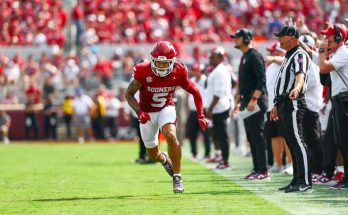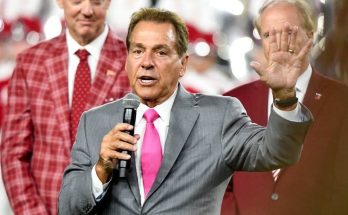The Golden State Warriors stand at a pivotal crossroads, one that could define the remainder of the Stephen Curry era and reverberate throughout the NBA for years to come. As they enter another offseason filled with questions, one decision looms larger than any trade, draft pick, or strategic shift: what to do with Draymond Green. For over a decade, Green has been the heart of the Warriors’ identity, the emotional engine of a dynasty built on unselfish basketball, elite defense, and internal chemistry. But now, with age catching up, production declining, and behavioral issues continuing to cast shadows, Golden State faces a stark choice—reward the past, or secure the future. In short, the Warriors must avoid making a crippling mistake with Draymond Green’s contract before it’s too late.
Last offseason, the Warriors made a bold move by extending Green on a four-year, \$100 million deal—a contract many viewed as a nod of loyalty rather than a strategic move rooted in basketball merit. At the time, it made some sense. Green had just come off another strong defensive campaign, his leadership was as fiery as ever, and he was still a central figure in Steve Kerr’s system. But fast forward a year, and the concerns that skeptics raised have grown louder, more vivid, and far more dangerous for the franchise’s long-term flexibility. Green’s production has dipped, his suspensions have mounted, and the margin for error in building a contender around an aging Curry has shrunk dramatically. The Warriors cannot afford to be sentimental. In a league where timing is everything, loyalty without accountability can become a liability.
What makes the Draymond dilemma so uniquely difficult is that his value isn’t always visible on the stat sheet. He’s not a volume scorer, and he never was. His shooting remains unreliable. But his defensive IQ, ability to quarterback a defense, and facilitate on offense have always made him a rare breed of impactful player. Still, even those intangibles have taken a hit. Father Time, as always, is undefeated. Green will turn 35 during the 2025 postseason, and while his basketball mind remains elite, his body has begun to betray him. Injuries have crept in more often. His lateral quickness, once a hallmark of his defensive versatility, isn’t what it used to be. And worse, his outbursts—once viewed as the edge that made him great—are increasingly viewed as distractions that derail team momentum.
This past season alone, Green found himself suspended multiple times, including a particularly troubling indefinite suspension for striking Phoenix Suns center Jusuf Nurkić in the face. Though he eventually returned to the court, the episode raised significant questions about his judgment, reliability, and emotional control—traits essential to any veteran leader. In a locker room filled with young, developing players, Green’s influence is immense. But when that influence turns toxic, it doesn’t just impact chemistry; it affects trust. At what point do the Warriors stop rationalizing his actions as passion and begin calling them what they are—self-destructive?
The challenge now is strategic and financial. Green’s contract is guaranteed through the 2026–27 season, with a player option for the final year. That option gives him the power to stay even if his value further plummets, essentially handcuffing the Warriors if they hope to create space for roster flexibility or a major acquisition. And therein lies the risk: if Green regresses any further, the Warriors could be stuck with an overpaid, underperforming player whose presence hampers the development of younger talent like Jonathan Kuminga and Brandin Podziemski. Worse, his volatility could create unnecessary drama at a time when Curry’s championship window is rapidly closing.
Golden State has prided itself on a culture of continuity. The Big Three of Curry, Klay Thompson, and Green built something that many franchises dream about—sustained excellence, playoff dominance, and four NBA championships. It’s hard to walk away from that. But dynasties don’t crumble all at once—they erode piece by piece, often when management fails to evolve. If the Warriors are serious about contending again, they must re-evaluate Green’s role—not just on the court, but on the payroll. Handing him another extension, or declining to shop him aggressively when the opportunity arises, would be a colossal mistake rooted in nostalgia rather than foresight.
There’s a lesson to be learned from other franchises who have struggled with the same dynamic. The Los Angeles Lakers clung to Kobe Bryant in his twilight years, rewarding his loyalty with massive contracts that crippled their cap space. It took nearly a decade before they climbed back into contention. The San Antonio Spurs, on the other hand, gracefully transitioned from the Tim Duncan era by developing youth and preserving financial flexibility. The Warriors must decide which example to follow.
In fairness, moving Green isn’t simple. His contract, age, and reputation make him a difficult trade piece unless Golden State is willing to package assets or absorb an equally problematic deal. But inaction isn’t an option either. The front office must at least explore scenarios where his salary can be redistributed into younger, more reliable pieces who can complement Curry and extend the team’s viability. With the new collective bargaining agreement placing harsher penalties on tax-paying teams, clinging to an inefficient roster could leave Golden State in a prolonged period of mediocrity.
Moreover, there’s a philosophical issue at play. Does Steve Kerr continue to prioritize Green’s voice in the locker room, even if his performance no longer warrants it? How does that affect buy-in from rising players? What message does it send to the next generation of Warriors about accountability, performance, and professionalism? The longer Green remains untouchable within the franchise, the harder it becomes to pivot to a new identity.
Of course, this isn’t a call for a knee-jerk reaction. Draymond Green is a future Hall of Famer. He deserves respect, celebration, and a place in Warriors lore forever. But the NBA is a business, and sentiment can’t outweigh strategy. The Warriors must find a way to honor Green’s legacy without allowing it to dictate their future. That may mean a painful conversation. It may mean limiting his minutes. It may mean asking him to take on a reduced role. Or, in the boldest scenario, it may mean pursuing a trade that sends shockwaves through the league.
No path forward is easy. But clarity is essential. The worst-case scenario isn’t trading Draymond Green—it’s keeping him out of loyalty and watching the team drift further from title contention while his production and behavior decline. Curry deserves better. The fans deserve better. And ultimately, the legacy of the Warriors’ dynasty deserves to end with dignity, not delusion.
As the NBA offseason unfolds, the front office must look at Green’s contract not as a reward for past greatness, but as a key decision that will shape the next era of Warriors basketball. The choice isn’t just about numbers. It’s about culture, future, and the will to evolve. If Golden State gets this wrong, the price won’t just be financial. It will be the end of a dynasty, not with a bang, but with a slow, painful unraveling. And once that happens, there’s no going back.



